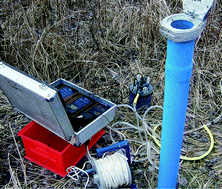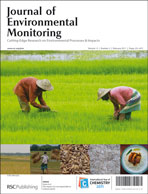Occurrence and distribution of organophosphorus flame retardants and plasticizers in anthropogenically affected groundwater
Abstract
Occurrence and distribution of chlorinated and non-chlorinated organophosphates in 72 groundwater samples from Germany under different recharge/infiltration conditions were investigated.


 Please wait while we load your content...
Please wait while we load your content...